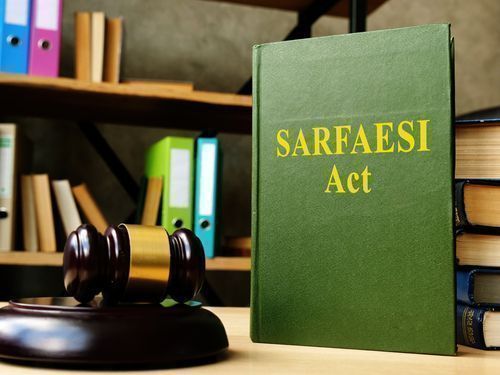SARFAESI ACT

The key parties involved in stressed account funding include:
- Borrower:
– The distressed company or account seeking financial support.
- Lender:
– Banks, financial institutions, or non-banking financial companies (NBFCs) provide loans or credit.
- Investors:
– Private equity firms, venture capital funds, or special situation funds investing in distressed assets.
- Asset Reconstruction Companies (ARCs):
– Specialized entities acquiring and resolving non-performing assets (NPAs).
- Regulators:
– Authorities like central banks or agencies (e.g., SEBI, RBI in India) ensuring compliance and oversight.
- Turnaround Professionals:
– Consultants, advisors, or management experts facilitating business recovery.
- Legal Advisors:
– Lawyers ensuring compliance with bankruptcy laws, loan agreements, and restructuring terms.
- Creditors:
– Other lenders, suppliers, or stakeholders owed money by the distressed company.
- Resolution Professionals:
– Appointed to manage insolvency proceedings under legal frameworks like the Insolvency and Bankruptcy Code (IBC).
- Shareholders:
– Existing owners or stakeholders affected by the restructuring or funding process.
The SARFAESI Act is an Indian legislation enacted in 2002 to enable banks and financial institutions to recover non-performing assets (NPAs) efficiently without the intervention of courts. It provides a legal framework for the securitization of financial assets and the enforcement of security interests in default cases.
Key Features of the SARFAESI Act
- Scope and Applicability:
– Applies to banks and financial institutions for recovering loans classified as NPAs.
– Not applicable for loans below ₹1,00,000 or where the unpaid amount is less than 20% of the principal.
- Securitization:
– Allows financial institutions to convert loans and assets into marketable securities.
- Asset Reconstruction:
– Enables the creation of Asset Reconstruction Companies (ARCs) to acquire and manage distressed assets.
- Enforcement of Security Interests:
– Empowers creditors to take possession of secured assets without court intervention in case of default.
- Auctioning of Assets:
– Banks can auction the seized assets to recover outstanding dues.
- Debts Recovery Tribunal (DRT):
– Provides a platform for borrowers to appeal against actions taken under the Act.
Process under the SARFAESI Act
- Issuance of Demand Notice:
– A 60-day notice is sent to the borrower demanding repayment of dues.
- Possession of Assets:
– If the borrower fails to comply, the secured creditor can take possession of the asset.
- Auction of Assets:
– The asset is auctioned to recover the outstanding amount.
Benefits of the SARFAESI Act
– Speeds up the recovery process of NPAs.
– Reduces the burden on courts by enabling creditors to recover debts directly.
– Promotes financial discipline among borrowers.
Offering services in stressed account funding:
- Debt Restructuring: Modifying loan terms for easier repayment.
- Bridge Financing: Short-term liquidity for immediate needs.
- Distressed Asset Investments: Capital injection or NPA acquisition.
- Factoring: Unlocking cash through invoice discounting.
- Turnaround Management: Operational and financial restructuring.
- Mezzanine Financing: Hybrid funding with debt-equity options.
- 7. Asset-Based Lending: Loans secured by company assets.
- Special Situation Funds: Targeted funding for recovery or M&A.
- Bankruptcy Exit Financing: Capital for post-bankruptcy operations.
